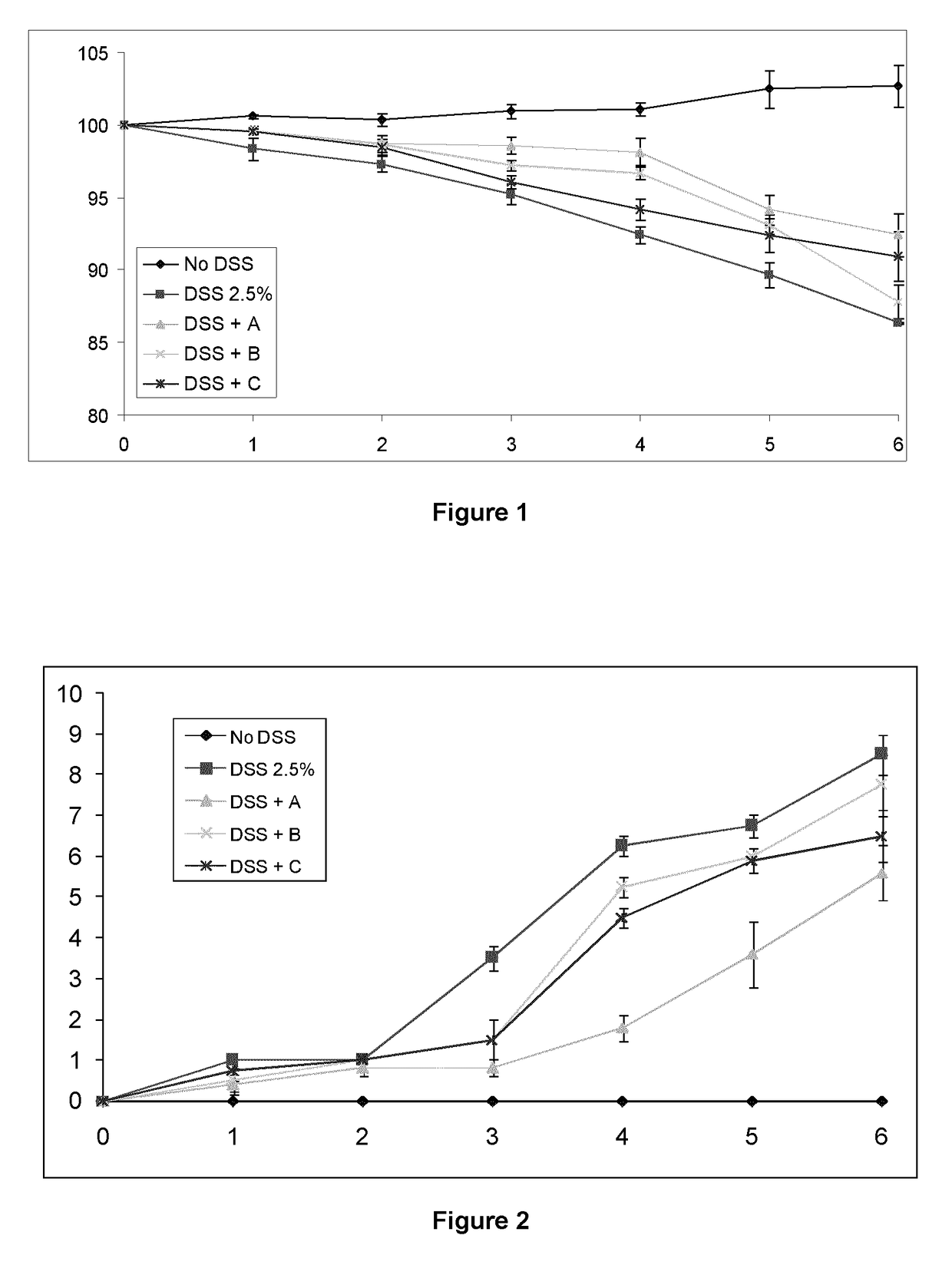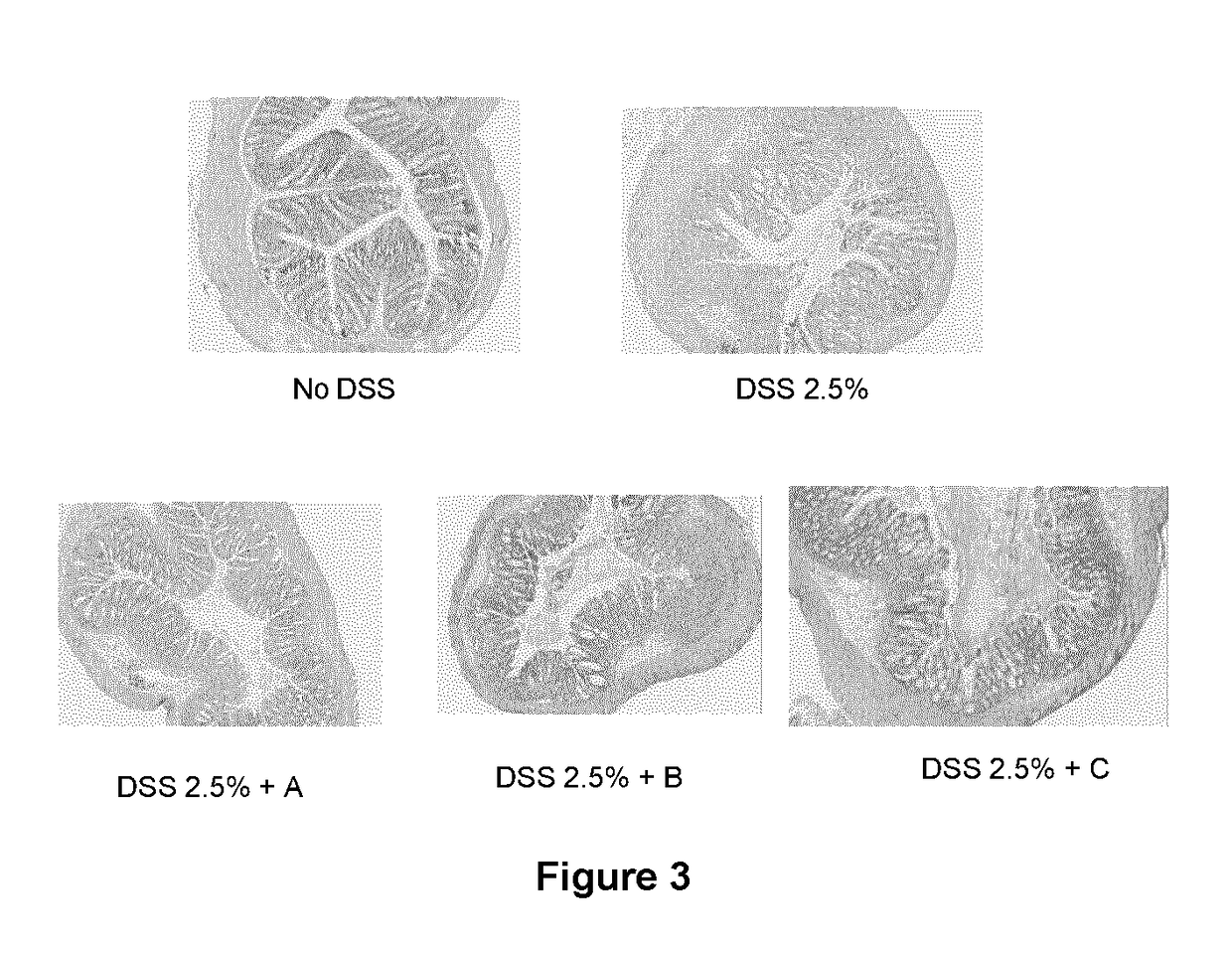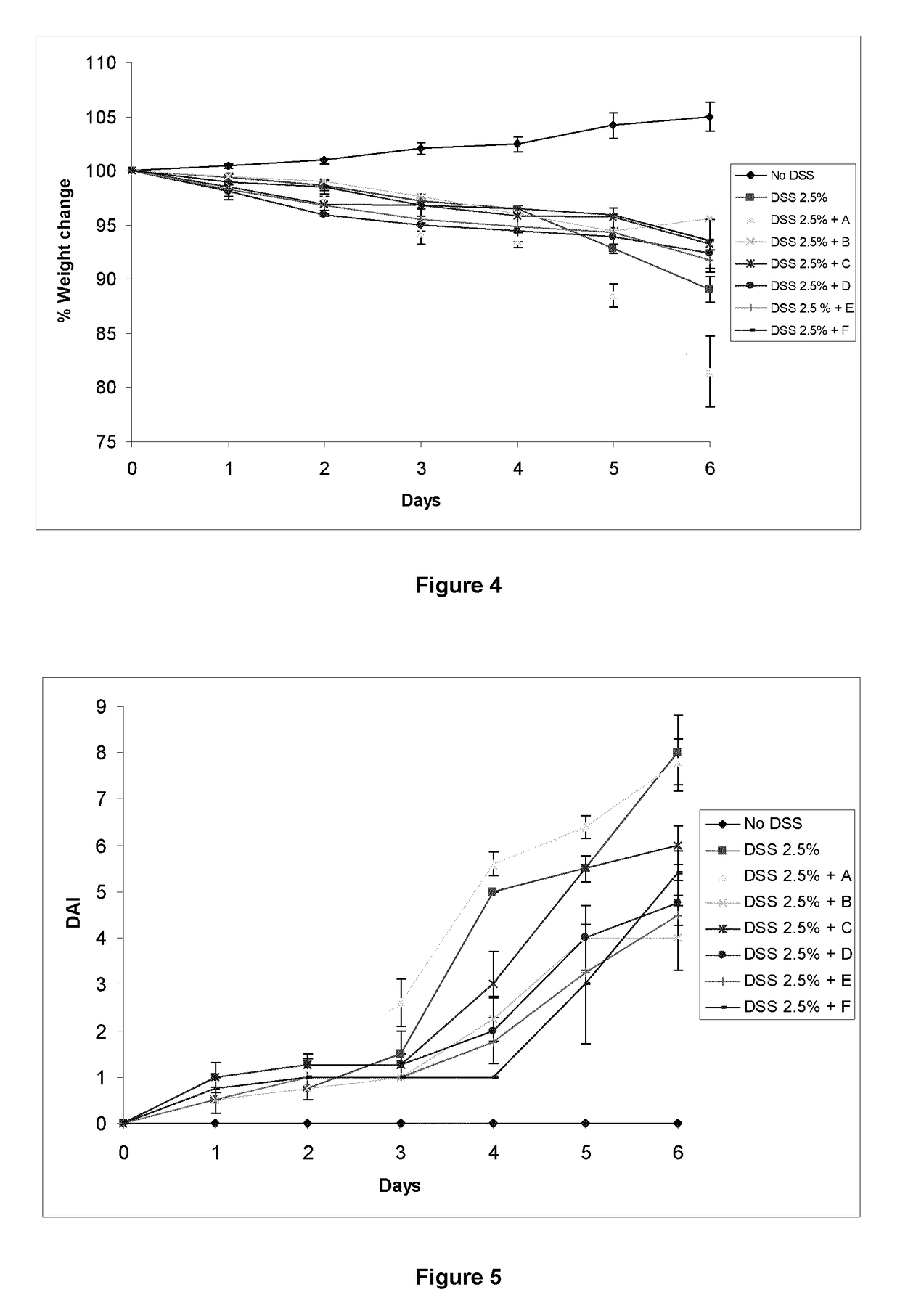Immunomodulatory compositions
a technology of immunomodulatory compositions and compositions, applied in the field of immunomodulatory compositions, can solve the problems of surgical intervention, limited ibd pharmacologic therapy, and severe morbidity of common diseases, and achieve the effects of reducing the risk of ibd
- Summary
- Abstract
- Description
- Claims
- Application Information
AI Technical Summary
Benefits of technology
Problems solved by technology
Method used
Image
Examples
example 1
Manufacturing of Minibeads
1.1 Hydralazine Beads
Preparation of Gelatin Phase.
[0511]Hydralazine (1.50% w / w), SDS (1.50%), D-Sorbitol (2.01%) and gelatin (17.50%) are added to water (77.49%) under constant stirring. The temperature is gradually increased to 60-70° C. to achieve complete dissolution of gelatin.
Preparation of Oil Phase.
[0512]Transcutol HP (54.96% w / w), Cremophor EL (30.01%) and Miglyol 810 N (15.04%) are stirred at room temperature until a clear solution is obtained.
Mixing of the Two Phases
[0513]Oil Phase and Gelatin Phase are mixed in a 1:9 weight ratio. The resulting solution is stirred at 60-70° C. to achieve a complete homogeneity, then the homogenous solution is ejected through a single orifice to form droplets which fall into a cooling oil medium (Miglyol 810N) at 8-10° C. The nozzle size (diameter) may be from 0.5 to 3.5 mm.
Filtering and Drying of Beads
[0514]After approximately 30 minutes, beads are recovered from the cooling oil, centrifuged to eliminate excess o...
example 2
Bead Formulations
[0529]Cyclosporin formulation (Formulation B)
[0530]
Component%Cyclosporine10.48Mygliol4.47Transcutol15.96Cremophor EL8.95Gelatin47.27SDS3.86D-Sorbitol5.44Surelease (solid content)3.50Pectin0.07
[0531]Cyclosporin / Hydralazine formulation (Formulation A & C)
[0532]Formulation A (high level of Hydralazine in the combination)
[0533]
Component%Cyclosporine9.30Hydralazine7.54Transcutol P14.61Miglyol 810N4.01Cremophor EL7.97Gelatin43.94D-Sorbitol5.01SDS3.79Surelease (solid content)3.77Pectin0.08
[0534]Formulation C (low level of Hydralazine in the combination)
[0535]
Component%Cyclosporine9.69Hydralazine3.95Transcutol P15.21Miglyol 810N4.16Cremophor EL8.31Gelatin45.84D-Sorbitol5.25SDS3.93Surelease (solid content)3.59Pectin0.07
[0536]The following dosages were administered:
[0537]Formulation B: ˜0.629 mg CyA per 2 bead dose
[0538]Formulation A: ˜0.651 mg CyA and 0.528 mg HyA per 2 bead dose
[0539]Formulation C: ˜0.678 mg CyA and 0.277 mg HyA per 2 bead dose.
[0540]In the “l...
example 3
Bead Formulations
[0548]Formulation A (3.8% wt. g Hydralazine beads)
[0549]
Component% w / wHydralazine4.31Transcutol P17.44Miglyol 810N4.77Cremophor EL9.52Gelatin50.23D-Sorbitol5.76SDS4.31Surelease (Solid Content)3.59Pectin0.07
[0550]Formulation B (3.8% wt. g hydralazine / cyclosporin A beads)
[0551]
Component% w / wCyclosporine9.69Hydralazine3.95Transcutol P15.21Miglyol 810N4.16Cremophor EL8.31Gelatin45.84D-Sorbitol5.25SDS3.93Surelease (Solid Content)3.59
[0552]Formulation C (Hydralazine uncoated beads)
[0553]
Component% w / wHydralazine4.47Transcutol P18.10Miglyol 810N4.95Cremophor EL9.88Gelatin52.14D-Sorbitol5.97SDS4.47
[0554]Formulation D (10% wt. g HyA / CyA beads)
[0555]
Component% w / wCyclosporine9.11Hydralazine3.71Transcutol P14.31Miglyol 810N3.91Cremophor EL7.81Gelatin43.11D-Sorbitol4.94SDS3.69Surelease (Solid Content)9.22Pectin0.19
[0556]Formulation E (8.7% wt. g Hydralazine beads)
[0557]
Component% w / wHydralazine4.11Transcutol P16.65Miglyol 810N4.56Cremophor EL9.09Gelatin47.97D-Sorb...
PUM
| Property | Measurement | Unit |
|---|---|---|
| diameter | aaaaa | aaaaa |
| diameter | aaaaa | aaaaa |
| concentration | aaaaa | aaaaa |
Abstract
Description
Claims
Application Information
 Login to View More
Login to View More - R&D
- Intellectual Property
- Life Sciences
- Materials
- Tech Scout
- Unparalleled Data Quality
- Higher Quality Content
- 60% Fewer Hallucinations
Browse by: Latest US Patents, China's latest patents, Technical Efficacy Thesaurus, Application Domain, Technology Topic, Popular Technical Reports.
© 2025 PatSnap. All rights reserved.Legal|Privacy policy|Modern Slavery Act Transparency Statement|Sitemap|About US| Contact US: help@patsnap.com



